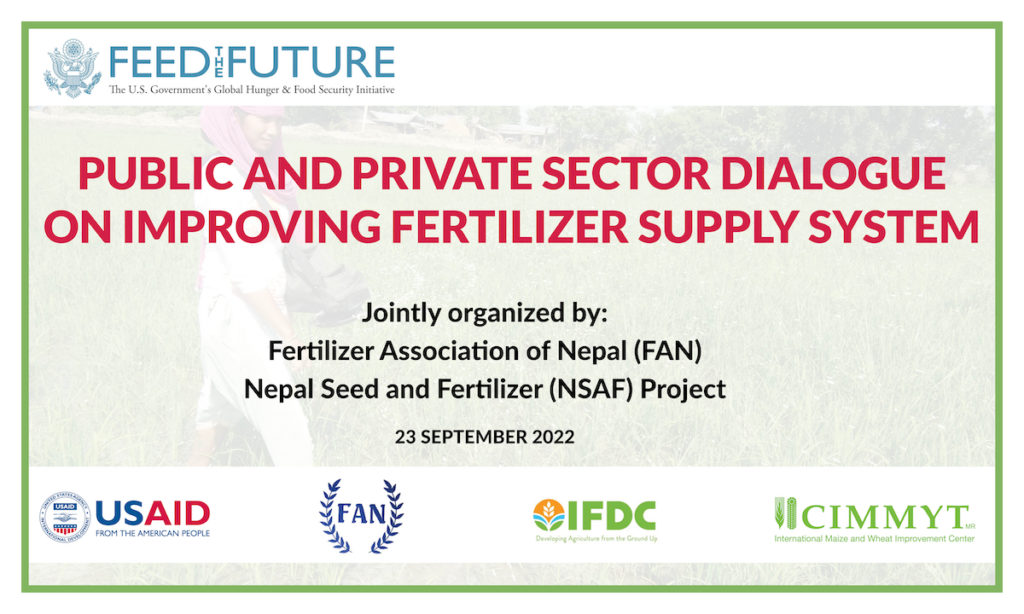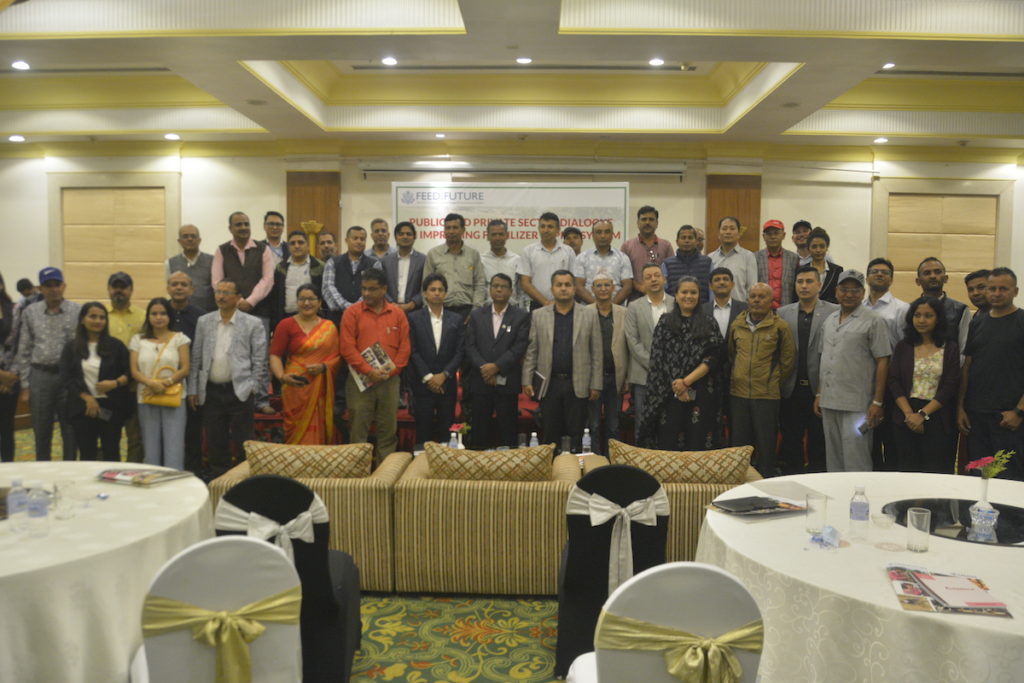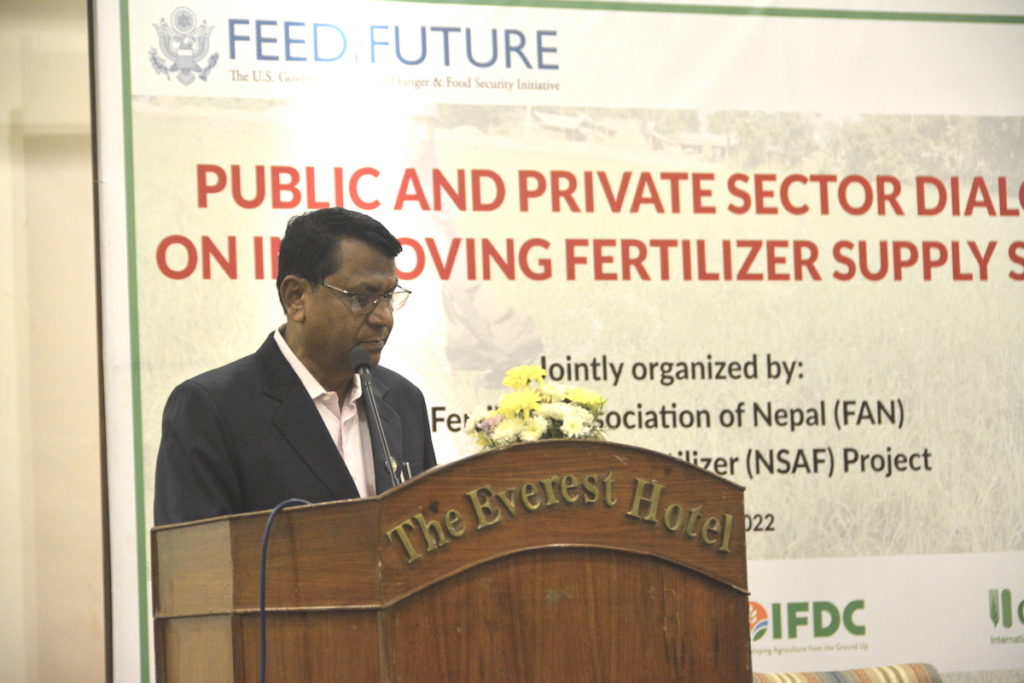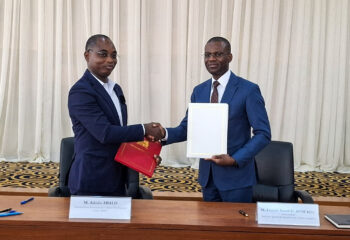
NSAF collaborates with the Fertilizer Association of Nepal to organize a policy dialogue with stakeholders.
The fertilizer supply shortage in Nepal has been a chronic problem. Thousands of local farmers are often unable to access the required quantity on time, particularly for the cultivation of rice, which is the major staple food crop for the country. Lower crop productivity is a major consequence that will ultimately pose a threat to national-scale food security and rural livelihoods.
The Government of Nepal imports three major fertilizers – urea, diammonium phosphate (DAP), and muriate of potash (MOP) – under a subsidy program through its two parastatal companies – Agriculture Input Company Ltd. (AICL) and Salt Trading Company Ltd. (STCL). The fertilizers are then retailed through cooperatives. The annual volume of import, determined by the international market price, ranges from 350,000 to 450,000 metric tons, which is about 50% of the total estimated active demand of 700,000 metric tons. Although the government has been increasing the fertilizer subsidy budget every year, it is not sufficient to meet the total demand. The gap in supply has compelled farmers to buy fertilizers through the grey market.

In addition to the budgetary constraints, the import and distribution policy also affects the shortage of products. The absence of a fixed schedule for opening the global tender for fertilizers delays and hinders the fertilizer supply. The private sector was not allowed to distribute subsidized fertilizers until late 2020. The COVID-19 lockdown and the Russia-Ukraine conflict have further deepened the crisis by significantly delaying imports and increasing the fertilizer price during the past two years.
To address these shortcomings, the Fertilizer Association of Nepal (FAN) is actively working with the Ministry of Agriculture and Livestock Development (MoALD) to resolve fertilizer policy issues and develop strategies for enhancing the fertilizer supply system. Since 2016, the Nepal Seed and Fertilizer (NSAF) project, implemented by the International Maize and Wheat Improvement Center (CIMMYT) in partnership with the International Fertilizer Development Center (IFDC), has been supporting FAN and MoALD to advocate for private sector engagement to improve fertilizer distribution efficiency.
In 2020, the Government of Nepal issued a fertilizer distribution directive in which the roles and responsibilities for the import and distribution of fertilizers are divided between federal, provincial, and local governments. At the federal level, authority for importing fertilizers is given to the Fertilizer Supply and Distribution Management Committee, led by the secretary of MoALD. The directive gives sole responsibility to the local government to distribute fertilizers by providing a distribution license to private sector companies as well as cooperatives. This ended the monopoly cooperatives had in the distribution of fertilizers.

Public and Private Sector Dialogue
On September 23, 2022, the NSAF project and FAN conducted a policy dialogue with the public and private sector for improving the fertilizer supply system in the country. Held in Kathmandu, the event brought together concerned public and private sector participants to discuss existing challenges and propose policy alternatives that would ensure the timely availability of fertilizers in the required quantity.
FAN presented the major issues and challenges affecting the fertilizer sector. Dyutiman Choudhary, project coordinator of the NSAF project, presented the findings of various fertilizer policy studies conducted jointly by NSAF and FAN. Findings from the survey showed that involving the private sector in fertilizer distribution improves farmers’ access to fertilizers compared with distribution limited to only cooperatives. The study also indicated the potential of reducing the fertilizer subsidy and increasing import volume to help meet the fertilizer demand.
A panel discussion was hosted to share experiences and issues of private sector importers, logistics service providers and retailers, and policymakers from federal and provincial governments while engaged in their respective functions. The panel members suggested options for improving the fertilizer supply system, such as: (1) restructuring the fertilizer subsidy, i.e., reducing the current subsidy by 20-30% and using the saved budget to increase import and allocate subsidy based on fertilizer demand, (2) developing a procurement process timeline to ensure timely fertilizer supply for three major crops, i.e., rice, wheat, and maize, and importing about 30% of the total fertilizer through government-to-government (G2G) agreements, (3) implementing a crisis management strategy by maintaining buffer stocks (20% of the demand), and (4) providing a level playing field for the private sector in the import and distribution of fertilizers. The discussion was facilitated by Yam Gaihre, soil scientist at IFDC.
The dialogue concluded with mutual recognition by the public and private sectors for the need to improve local fertilizer distribution through private sector engagement. They arrived at a consensus to revise some clauses specified in the Nepal Fertilizer Distribution Directive 2020 related to profit margins, volumes, classification of fertilizer distributors, and sales of fertilizers. Govinda Prasad Sharma, secretary of MoALD, informed the group that they have already started planning fertilizer procurement based on the actual demand and ensured the use of G2G agreements with neighboring countries to bring fertilizers in a timely manner for use during peak demand. Sharma agreed to continue supporting the private sector in capacity building to import fertilizers and provided assurance that fertilizer subsidies would be revised to make more fertilizers available with the available budget.

Honorable Minister Mrigendra Kumar Sigh Yadav of MoALD expressed his satisfaction with the dialogue and lauded it as timely and rich in content.
Lynn Schneider, deputy director of the Economic Growth Office at USAID/Nepal, said, “It is our great pleasure to see all fertilizer-related stakeholders in a common platform, which is critical to bring out key issues and cooperation between the public and private sector.” She also emphasized generating efficiency in estimating fertilizer demand and supply and fertilizer types by using Nepal’s digital soil map, working in close coordination with the provincial and local governments, and increasing the role of the private sector to ensure fertilizer supply to meet crop requirements in the peak season.




